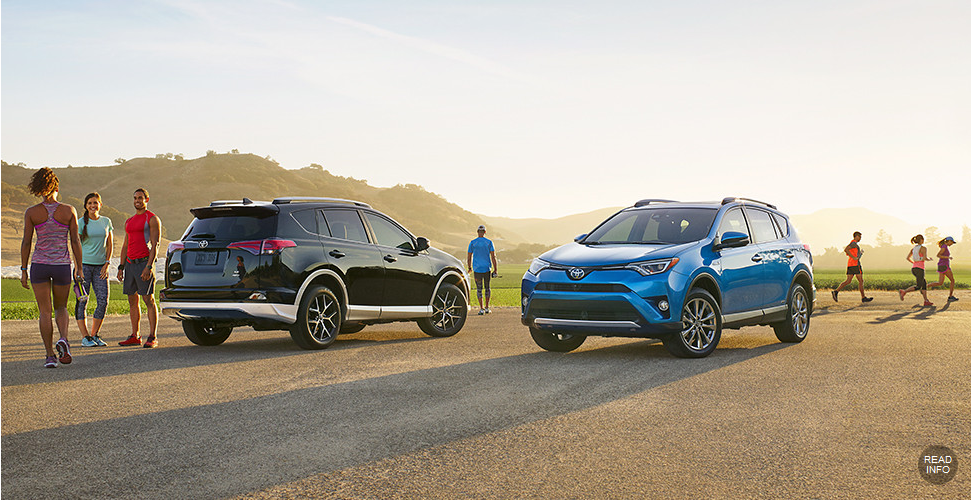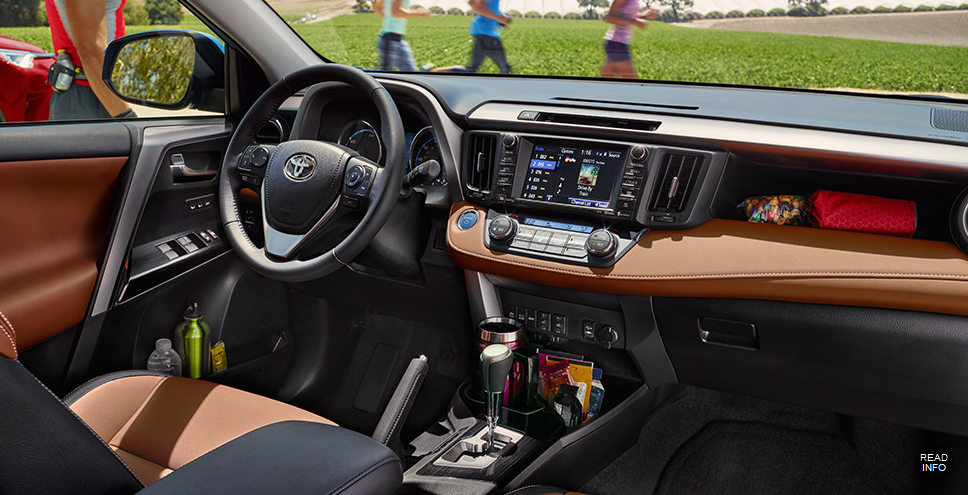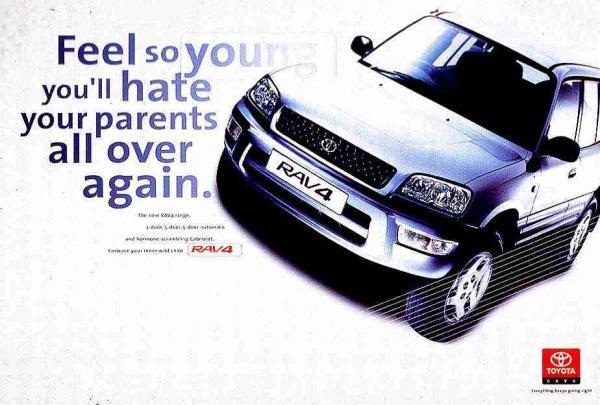Introduction
Toyota is among the most prominent brands in the automotive industry. Its recent take on hybrid vehicles, RAV4, is a best-selling SUV in the US (Cain, 2016). The following report explores the brand’s target market, positioning, and highlights key integrated marketing communications (IMC) strategies in an attempt to track the reasons behind the success of its marketing campaign.
Customer Profile/Target Market
The imagery located on the company’s website allows us to identify the demographics of the intended audience as the customers roughly thirty to forty age groups. The marketing campaign is not restricted to a specific gender. The psychographic profile leans toward individuals interested in sports and outdoor activities since many images show a group of people in sportswear. In addition, nine out of ten images located on the page dedicated to RAV4 depict a car in a non-urban environment, which is appealing for the customers who prefer traveling and hiking

(Dynamic exterior, n.d.). This is a visible departure from the usual behaviouristic approach chosen by car companies, which commonly appeal to social status and luxurious characteristics. Nevertheless, this aspect of the market segmentation variable is not totally absent from the customer profile – the description of services and characteristics of RAV4 feature such passages as “prestigious driving experience” and “luxurious feel” (Toyota, 2016). It is important to note, however, that luxury is secondary to innovation and technological superiority such as performance, safety, fuel consumption, and automatized functions.
Company’s Brand Positioning
The positioning of RAV4 is made via its attributes and benefits. The attributes of the product, e.g. performance, are product-related (Toyota, 2016). Besides, detailed reports of fuel consumption and net horsepower are featured prominently throughout the campaign. Of particular interest is the emphasis on the hybrid powertrain which is one of the product’s selling points and adds to the uniqueness of brand associations.
Importantly, hybrid vehicles are appealing to a specific audience which favors sustainability and cost-efficiency over performance. At the same time, until recent years hybrid cars were perceived by a wider audience as inferior to gas-powered vehicles in terms of performance, which necessitates the emphasis on positioning via product-related attributes. For the same reason, the brand benefits which are prioritized throughout the campaign are functional ones.
For instance, spacious cargo and interior capacity are emphasized in the textual and graphic ads of the car. One image notably shows RAV4’s interior cluttered with additional objects – the move which undermines the luxurious vibe but adds to the feeling of comfort, familiarity, and utility

(Spacious interior, n.d.). However, the underlying message also suggests experiential benefits – for example, the description of performance specifications includes the mention of “extra thrills,” and most of the printed ads describe the driving experience as “feeling young”

(Toyota RAV4 print ad, n.d.). Thus, it can be argued that the chosen strategies emphasize functional benefits with experience as a secondary yet visible factor.
Integrated Marketing Communication Strategy
The RAV4 marketing strategies are built around print and broadcast media advertising with gradually heavier involvement of digital marketing communication.
The printed media include leaflets, brochures, and advertisements in various thematic magazines. Most of the printed ads stick to the formula described above with slight modifications depending on the volume of the piece. Smaller ads tend to prioritize the experiential benefits of the product while more voluminous examples offer in-depth descriptions of the functional benefits of the car.
The “Challenge Hybrid Myths” online ad campaign is a six-part video series that explores the advantages of RAV4 in a humorous manner (Toyota, 2016). While each part deals with a real advantage, such as cost-efficiency, visual design, and performance, no attempt is made to persuade the viewer – instead, the emphasis is made on memorability, so that the viewers can reflect on the message rather than believe in it.
The success of the campaign is confirmed by the fact that most entries are resulting from the search, which suggests initiative on the part of customers (SimilarWeb, 2016). Another prominent attempt at establishing digital marketing communication is a recent Facebook campaign that offers a video customized from 100 snippets based on their tracked preferences and behaviors (Tode, 2016). The mechanism takes advantage of Facebook’s social component.
Such an approach not only assures the unique approach and caters to individual tastes but also opens up possibilities for gathering feedback. By tracking the popularity of customized videos and analyzing the related trends in individual consumer behavior, Toyota is able to adjust the strategies to a more specific audience and exclude unnecessary deviations.
Finally, the brand uses sponsorship marketing. Particularly, the RAV4’s “Let’s Go Places” campaign includes Nocturnal Wonderland music festival and Rock ‘n’ Roll Marathon Series as a part of its sponsorship portfolio (Let’s go places, 2015). The latter is popular among female athletes, which is consistent with the demographic and psychographic profiles of the audience.
Unapplicable Methods
The campaign notably excludes sales promotion, personal selling, and point-of-purchase marketing, none of which is suitable for the automotive industry as it undermines the respectable image of the brand. Direct marketing techniques are also in decline with the availability of social media substitutes such as customized videos. Finally, public relations, such as Toyota technical schools, are not mentioned because they are not directly tied to the RAV4 product.
Conclusion
The IMC campaign of RAV4 is a success for two important reasons. First, it distances itself from symbolic benefits that are irrelevant for the hybrid vehicles and prioritizes the functional ones. Second, it seeks to deliver the message on an individual basis and thus expands its intended audience. Currently, the chosen direction is promising, and there is no reason to change it and retract to traditional marketing strategies.
References
Cain, T. (2016). Want to beat the Honda CR-V? Sell a hybrid. Web.
Dynamic exterior. (n.d.). Web.
Let’s go places: Toyota adds marathon series and music festivals to sponsorship portfolio. (2015). Web.
SimilarWeb. (2016). Traffic overview. Web.
Spacious Interior. (n.d.). Web.
Tode, C. (2016). Toyota sparks customized storytelling via 100,000 targeted video ads. Web.
Toyota. (2016). RAV4. Web.
Toyota RAV4 print ad. (n.d.). Web.